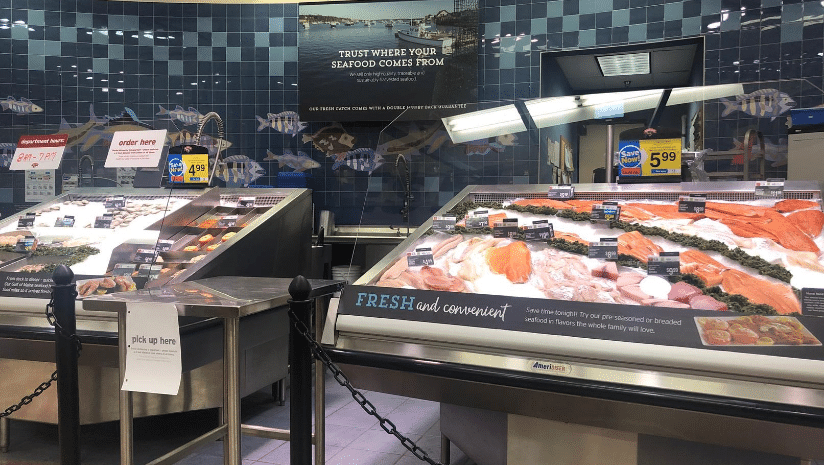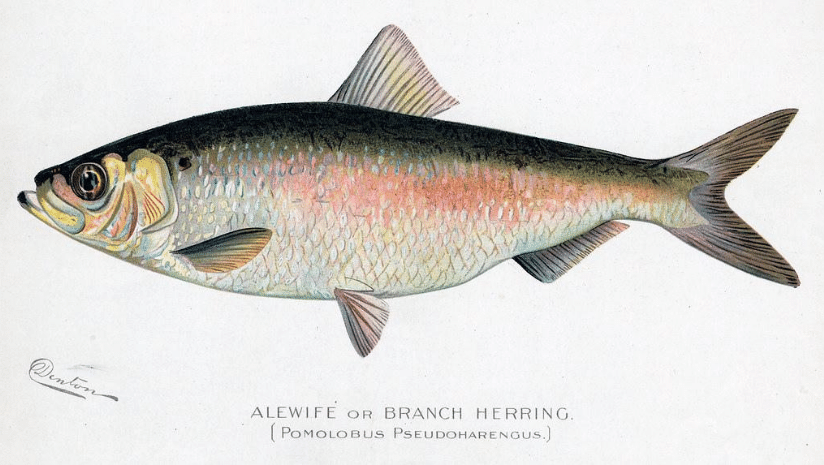
Maine-eDNA: Looking backward to move Maine forward
by Liz Theriault, Maine EPSCoR Student Writer

WHAT DO YOU SEE WHEN YOU PICTURE A TIME MACHINE? Maybe it’s the car from the popular 1980s film Back to the Future. Or perhaps you picture a metal box decorated with flashing lights and mysterious levers. But for Michael Kinnison, he pictures environmental DNA (eDNA).
Kinnison is a co-PI on Maine EPSCoR’s newest National Science Foundation Track-1 grant, Molecule to Ecosystem: Environmental DNA as a Nexus for Coastal Ecosystem Sustainability for Maine (Maine-eDNA). Beginning in 2018, Kinnison worked with Maine EPSCoR to develop, pitch, and secure the Maine-eDNA grant. After the grant was awarded, he spearheaded numerous projects using eDNA.
eDNA is the genetic material left behind by organisms in their natural environments. Depending on the organism’s size, eDNA can be composed of an entire living organism, shed skin cells, gametes or waste products. For EPSCoR’s Track-1 grant, eDNA is collected from water or sediment samples to learn more about Maine’s aquatic species.
Kinnison uses this left-behind genetic material to look into the past of Maine’s aquatic species; more specifically, alewives. The alewife is an important species for coastal Maine, because its migratory practices tie Maine’s freshwater lake ecosystems to ocean environments.
“Alewives are migratory fish, who hatch from their eggs in freshwater lakes and then migrate to the ocean where they grow for a number of years, before coming back to the lakes to reproduce,” explained Kinnison. “They bring nutrients and other materials from the ocean to help lake systems, and they become food for a lot of organisms when they go out to the ocean.”
But this important link has been weakened. Historical practices of building dams on lake and river outlets have stopped the migrations of alewife and many other species, which has drastically changed the ecosystems of Maine’s freshwater lakes. Currently, many of these dams are now being taken down around the state. And recent knowledge produced by environmentalists has stressed the importance of alewives, not only for ecosystems, but as an important resource for Maine’s indigenous populations. This has sparked large restoration efforts by conservationists and citizen scientists.
Researchers are still primarily unsure of the location, population size, or environmental impact of alewives before the dams interrupted their migration process. Kinnison and his research hope to fix that.
“The question we are presented with is, when you restore something, are you really getting the same thing you had before you lost it?” asked Kinnson. “We can use eDNA to collect the DNA left by alewife that has collected in sediments, to know where they were and how many of them existed before Europeans colonized the area, put up dams and harvested.”
This is where the time machine comes in. The eDNA nestled into the sediments lining the bottoms of lakes and oceans is composed of genetic material of species from hundreds and thousands of years ago. By collecting and analyzing this data, researchers like Kinnison are able to deduce species’ locations, population density and migration patterns of aquatic creatures that haven’t lived in that ecosystem for hundreds of years.
And the accessible information doesn’t just stop at one species. By using the combined eDNA of multiple species, Kinnison is able to see the ways a species like alewife impacts an entire ecosystem.
“We can look at the food they ate, which is zooplankton, to see how they shaped the zooplankton communities, and those zooplankton eat algae, so we can look at how alewives can have effects all the way to the basic food web of microscopic diatoms,” said Kinnison. “This is how we are trying to use eDNA as a time machine.”
Being able to understand how, when, and where the alewife population existed in Maine’s past ecosystems will strengthen future restoration and conservation efforts. One of Kinnison’s end goals with Maine-eDNA is to aid in restoration efforts of alewives: “Part of the goal is to do a better job at where and how we reintroduce them into lakes, and also improve how we manage or work with them in marine environments,” said Kinnison.
But at this beginning stage of Maine-eDNA, Kinnison has other goals in mind for the project as well. “What we are trying to do is build a capacity, an ability, a new tool or a way to use eDNA to bigger ecological questions,” said Kinnison.
If Kinnison’s research is able to examine alewives and improve restoration efforts, then his practices have potential to be applied to other organisms, like salmon, eel, lobster or other species that are important to Maine. This practice of considering multiple species and their interactions is often performed in assessing sustainable fisheries. But creating effective resource management decisions on entire ecosystems can be difficult and time consuming.

“To understand how we interact [with aquatic species] and how they respond to human effects in the environment takes a lot of data collection, a lot of people, a lot of time, and a lot of different equipment,” said Kinnison. “And it’s all made more challenging by the fact that techniques people use to catch an alewife are different than the techniques used to catch a seal or zooplankton, or even a technique used to catch an alewife in the ocean compared to a lake or river.”
Different techniques for data collection make it almost impossible for researchers to compare data sets with current tools. But through eDNA, researchers are able to consistently collect comparable data across all types of organisms—because all organisms are composed of DNA.
“One of the real problems with natural resource management and even in ecology as a field is we often have to reduce things down to a small scale, like a single pond or lake studied intensively, or even just experiments in a lab, because that is the scale where we can manipulate, study things and get enough data to ask a question,” said Kinnison. “But we always know in the back of our minds that one lake isn’t the same as all lakes. But eDNA allows us to get samples relatively easily through water collection, and we can start to ask real questions that link lakes to other lakes, the ocean, or the whole coast. It’s scaling up to ask questions that we couldn’t do before.”
New eDNA research also has practical benefits beyond improving research capacity. Maine’s economy is heavily reliant on coastal and natural resources. And changes to Maine’s fisheries, drinking water, coastlines and other areas impact the livelihoods of Mainers. Using eDNA helps researchers expand and deepen the understanding of these changes, which creates better resource management practices and protects Maine’s way of life.
But the potential to expand Maine’s economy beyond natural resources does exist. One of Maine EPSCoR’s primary goals is expanding workforce development within the state by funding training, education and technology development.
“More types of technology can help expand the job options for people in the state and the types of businesses that can be here. But moving a state from mostly natural resources to technology means a lot of training,” explained Kinnison. “And the trick is making that training accessible without disrupting the current system while building a future for Maine. I like to think of eDNA as a bridge that brings high-tech genetic tools and capabilities to our natural resource economy while building a workforce skill set that can be adapted to other types of biotechnology, new business, and innovations.”
Moving forward, the new Maine-eDNA grant will ensure that Maine’s capacity for new technologies expands, while training its workforce for new economic opportunities. The grant will open the doors to new collaborations between researches and with large partners, such as the Darling Marine Center and the National Ocean and Atmospheric Administration. In the coming years, Kinnison and other Maine-eDNA researchers will use eDNA as a time machine to look backwards, and to make sure Maine’s future is sustainable and efficient.
